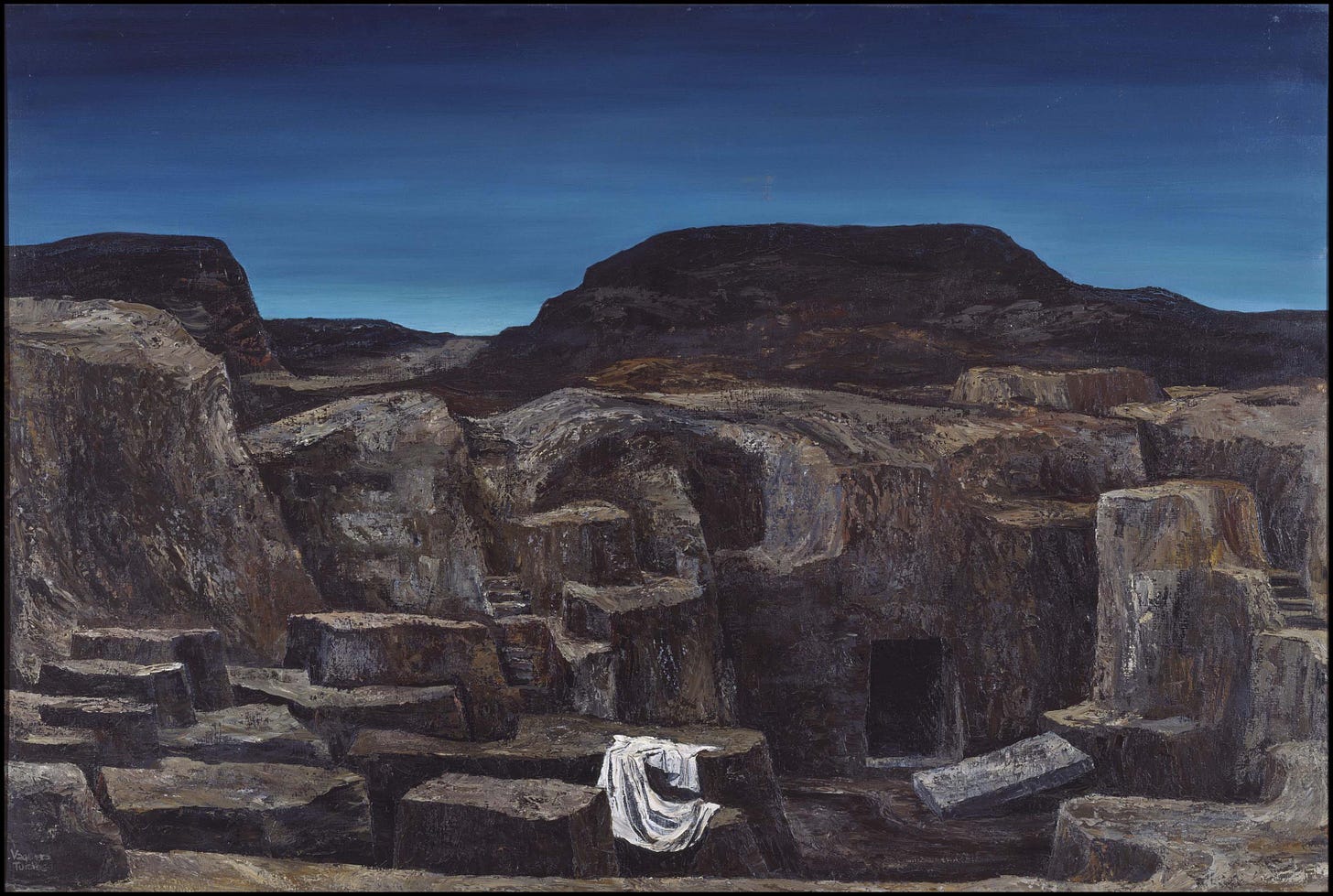More Than a Metaphor
"If He rose at all, it was as His body"
Alba de Resurrección (Dawn of Resurrection), Joaquín Vaquero Turcios
If there is no resurrection of the dead, then Christ has not been raised; and if Christ has not been raised, then our proclamation has been in vain and your faith has been in vain.
I Corinthians 15.13-14
Last week as I was talking to my sons about the events of Holy Week and Easter, I noticed some skepticism on my 9-year-old’s face when I got to the part about the resurrection. He asked, “Did he actually come back to life or was it just his spirit?” It is a good question. And there are certainly those who believe that it was just his spirit, that only Christ’s message lives on through the teaching of the apostles. A few years ago, Serene Jones told the New York Times columnist Nik Kristof:
“For me, the message of Easter is that love is stronger than life or death. That’s a much more awesome claim than that they put Jesus in the tomb and three days later he wasn’t there. For Christians for whom the physical resurrection becomes a sort of obsession, that seems to me to be a pretty wobbly faith.”
Well, count me among the obsessed. And for the record, I don’t think it’s a much more awesome claim to say that love is stronger than death than it is to say that Jesus, who was crucified, rose from the dead three days later. I confess, I need more than a spiritual resurrection. I need more than a metaphor. I need to know that death loses and life prevails, and not in the abstract. “Let us not seek to make it less monstrous, for our own convenience, our own sense of beauty,” writes John Updike, in his glorious Easter poem, “Seven Stanzas at Easter.” “Lest we are embarrassed by the miracle.” As Saint Paul says, it is our very salvation.
Make no mistake: if he rose at all
It was as His body;
If the cell’s dissolution did not reverse, the molecule reknit,
The amino acids rekindle,
The Church will fall.
It was not as the flowers,
Each soft spring recurrent;
It was not as His Spirit in the mouths and fuddled eyes of the
Eleven apostles;
It was as His flesh; ours.
The same hinged thumbs and toes
The same valved heart
That—pierced—died, withered, paused, and then regathered
Out of enduring Might
New strength to enclose.
Let us not mock God with metaphor,
Analogy, sidestepping, transcendence,
Making of the event a parable, a sign painted in the faded
Credulity of earlier ages:
Let us walk through the door.
The stone is rolled back, not papier-mache,
Not a stone in a story,
But the vast rock of materiality that in the slow grinding of
Time will eclipse for each of us
The wide light of day.
And if we have an angel at the tomb,
Make it a real angel,
Weighty with Max Planck’s quanta, vivid with hair, opaque in
The dawn light, robed in real linen
Spun on a definite loom.
Let us not seek to make it less monstrous,
For our own convenience, our own sense of beauty,
Lest, awakened in one unthinkable hour, we are embarrassed
By the miracle,
And crushed by remonstrance.
—John Updike, “Seven Stanzas as Easter” (1960)
I love to hear from you. Just reply to this email or leave a comment here about what you’re learning or what is inspiring you. Feel free to forward this email to someone you think might enjoy it. If you received this email from a friend and would like to subscribe, please do so here.

Like you I also believe, period , full stop .Thanks for sending the Updike poem , with your permission I’ll use at Men’s Bible study Friday.
Jon, I admire you for your obsession! I have no informed opinion of my own. But if Jesus reappeared in human form what then became of him? Tom Hampson